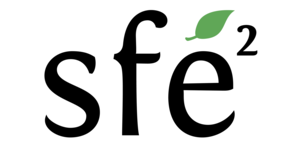Candidate profile: Master’s student (M2 level) with a background in environmental sciences, geochemistry, marine biology, or Earth sciences. Both research-oriented and professional master’s programs are welcome.
Internship location: CEREGE, Technopôle de l’Arbois, Aix-en-Provence, France
Duration: 6 months
Starting date: Between January and March 2026
Application deadline: 31 October 2025
Compensation: Monthly allowance according to French regulations in force as of January 1, 2026 (gratifications de stage)
Supervision: Sonia Chaabane, Olivier Sulpis, Thibault de Garidel & Laetita Licari (CEREGE, France)
chaabane@cerege.fr; sulpis@cerege.fr; garidel@cerege.fr; licari@cerege.fr
Collaborators
· International collab.: M. Thiam (UCAD, Senegal) and E. Machu (LOPS, France and currently at INRH, Morocco)
· National collab.:, K. Tachikawa & G. Leduc (CEREGE, France); Pierre Amel Auger (LOPS, France)
Context
Human activities and global warming are profoundly altering marine ecosystems. In tropical oceans, surface warming enhances water-column stratification, reducing ventilation and promoting oxygen depletion. Combined with increased microbial respiration, this process leads to widespread hypoxia in subsurface waters. Along the Senegalese coast, expanding low-oxygen zones have already been reported, threatening fisheries and benthic ecosystems that sustain local economies. In coastal Senegal, two oxygen-depletion drivers coexist: offshore hypoxia from poor ventilation and high organic matter inputs from mangroves. While mangroves play a crucial role in coastal protection and nutrient cycling, their decomposition releases nitrogen and phosphorus, which can exacerbate eutrophication and deoxygenation.
Despite recent mangrove regeneration in Senegal, the extent to which their evolution modulates oxygen and nutrient cycles in coastal sediments remains poorly quantified. This Master 2 project seeks to understand how mangrove–ocean interactions influence oxygenation dynamics along the Senegalese margin. Within this framework, the Master 2 project will focus on building a site-specific calibration between oxygenation and benthic foraminiferal (microorganisms living on or within the sediment, building calcium carbonate shell, that are highly sensitive to oxygen availability) traits, and on using a simple surface sediment (RADI) model to simulate sedimentary oxygen dynamics. This work will provide new evidence into how tropical coastal systems respond to combined oceanic and terrestrial pressures in a rapidly changing climate.
Goal and Tasks
The main goal of this Master 2 project is to assess oxygenation changes in Senegalese coastal sediments over the past century, focusing on two representative lagoonal systems: Joal-Fadiouth and Mbodiène. These sites, located along the southern Senegalese coast, are directly influenced by mangrove organic inputs and seasonal upwelling dynamics. The student will first conduct in-situ micro-profiling of oxygen (O₂), pH, and temperature in surface sediments of both lagoons.
As part of the project, the student will participate in a sampling campaign in Senegal during the last week of February 2026 (all expenses covered), collecting sediment cores and in-situ measurements in collaboration with local researchers from the Université Cheikh Anta Diop (UCAD) and the LMI ECLAIRS 2 team.
In parallel, the student will perform a proxy calibration using benthic foraminifera from surface sediments. This includes picking and cleaning specimens and identifying taxa, and quantifying their morphological traits (test size, pore density, and pore area) using automated imaging systems on the MANTA platform at CEREGE, SASHIMI and MiSo. Shell thickness will be determined for a subset of specimens using micro-CT imaging. Obtained images will be labeled using convolutional neural networks (CNN).
The student will also set up and learn to use the RADI 1-D reactive transport model, which simulates processes in marine sediments. The model will first be calibrated to the present-day porewater O₂ micro-profiles at one or two sites by optimizing key parameters such as organic matter reactivity, pore-water advection, and mineral phase composition. Once validated, the model will be used to test the effects of varying mangrove-derived organic inputs and bottom-water oxygenation on sedimentary O₂ profiles.
Finally, the student will simulate the historical evolution of porewater oxygenation over the last century, combining model outputs with reconstructions derived from benthic foraminiferal proxies and complementary geochemical analyses provided by collaborating colleagues at CEREGE.
Required skills: basic knowledge in marine ecology and biogeochemistry, basic coding skills (Matlab, R, Python etc.).
Working conditions: 2-weeks field work in Senegal, lab work and modelling at CEREGE, Aix en Provence.
Application: Send CV and cover letter to supervisors

Commentaires récents